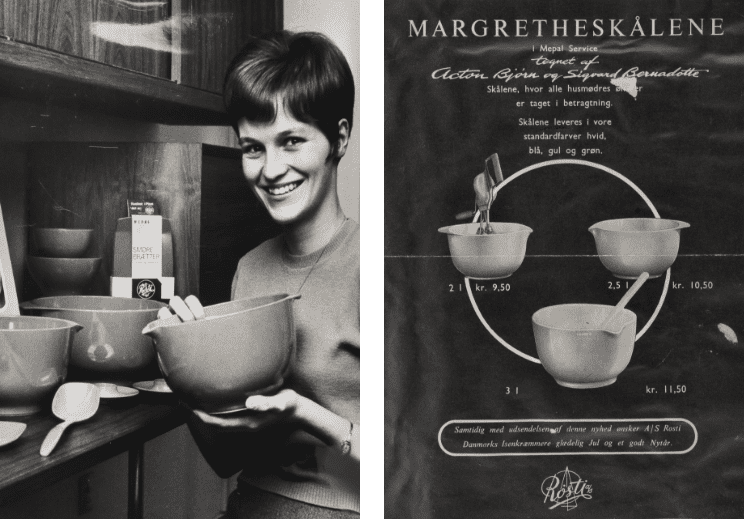This bowl is the original since 1954

QUEEN OF MIXING BOWLS
THE MARGRETHE BOWL
The Margrethe bowl has been a star in the kitchen for 70 years, appearing on millions of culinary stages around the world. The bowl was designed by Sigvard Bernadotte and Acton Bjørn’s design studio in Copenhagen, and in 1954 it was named after, Queen Margrethe II. The Margrethe bowl is made to last, and multiple generations know and love the Margrethe bowl for its excellent qualities and many benefits. The original and unsurpassed design has remained unchanged over the years and is characterised by details including its perfect stackable shape, superb handle, practical pouring spout, non-slip ring at the base, superior scratch-resistant surface and its durability.
WE LOVE COLOURFUL IDEAS
Many different colours
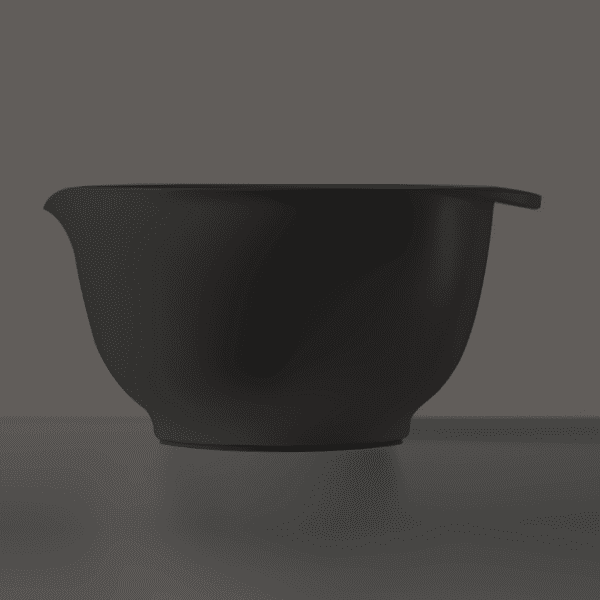
BLACK
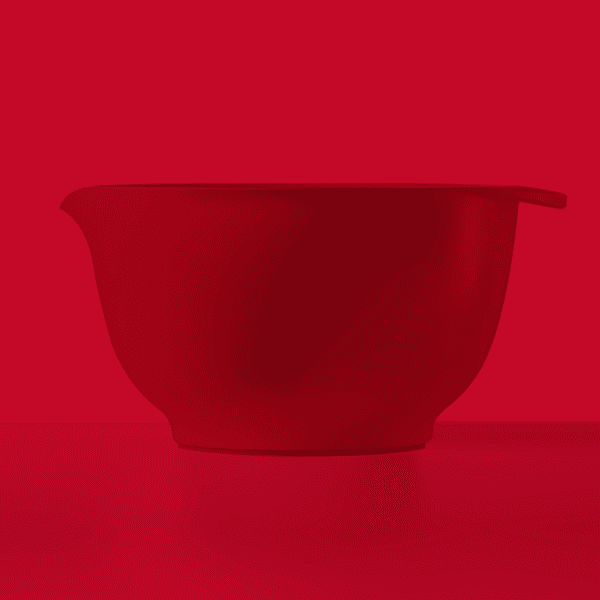
Red
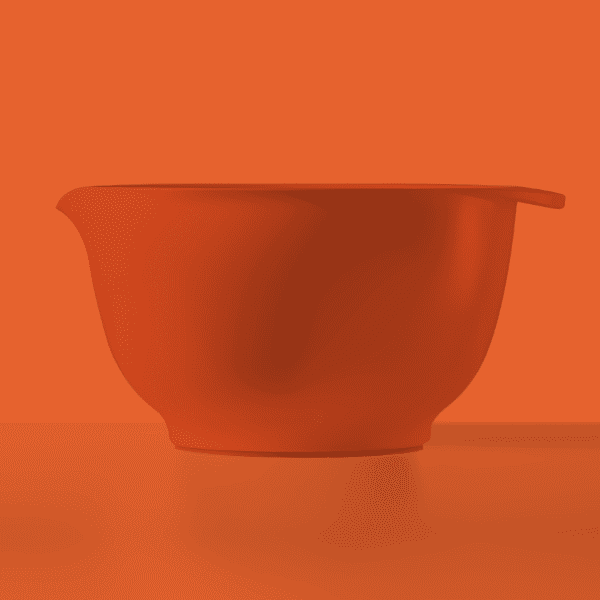
Carrot
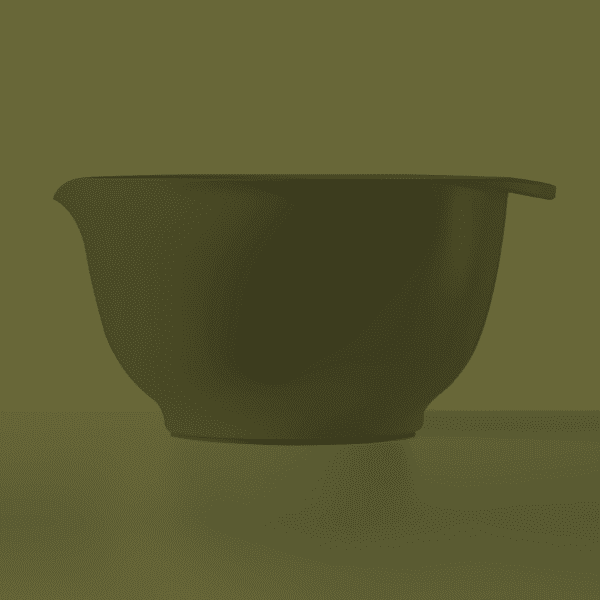
Olive

Curry

Humus
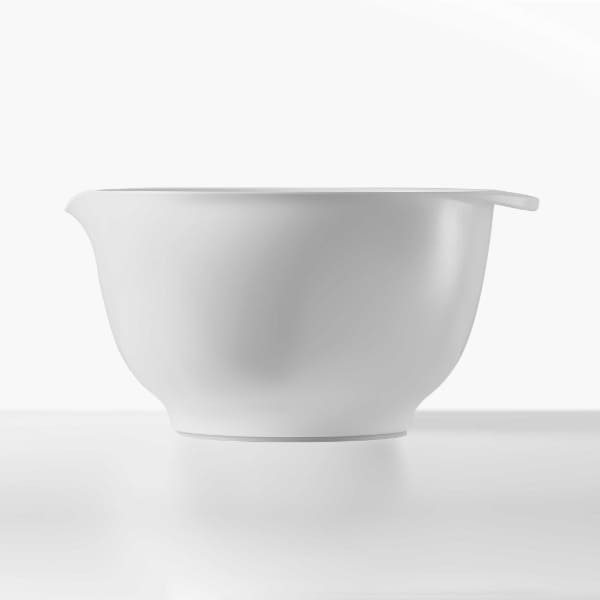
White
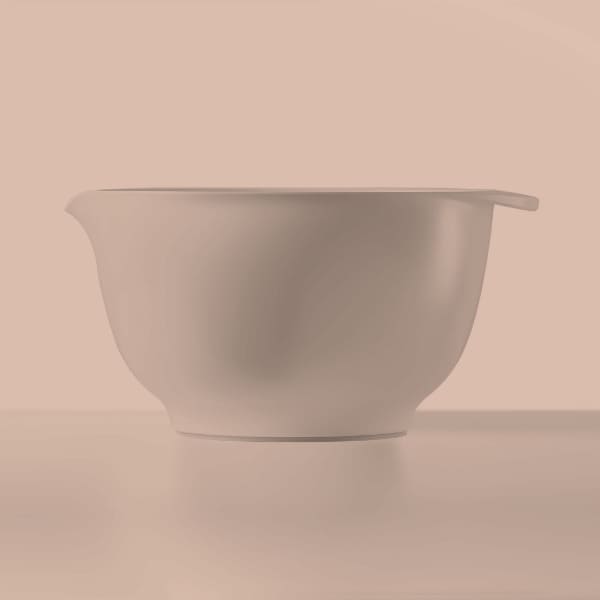
Nordic blush
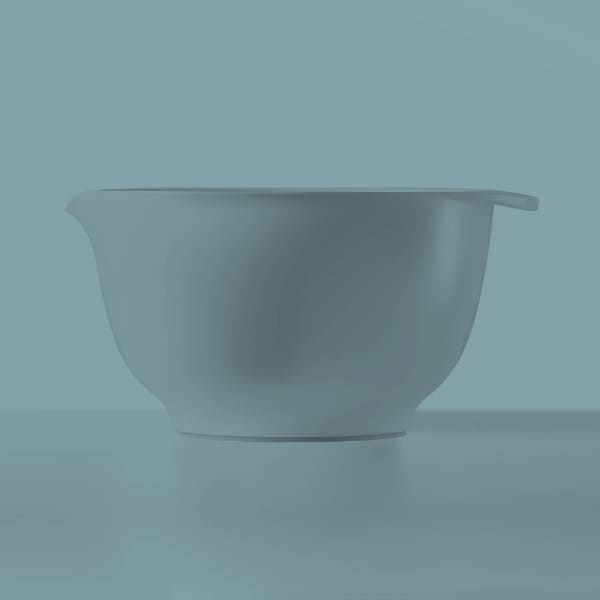
Nordic green
THE ORIGINAL SINCE 1954
The Margrethe mixing bowl is one of the most popular and durable kitchen products, and more than 25 million have been sold. The range includes multiple sizes, materials and colours, as well as lids. 5-year warranty.
MUCH MORE THAN A BOWL
The Margrethe bowl is part of a large family
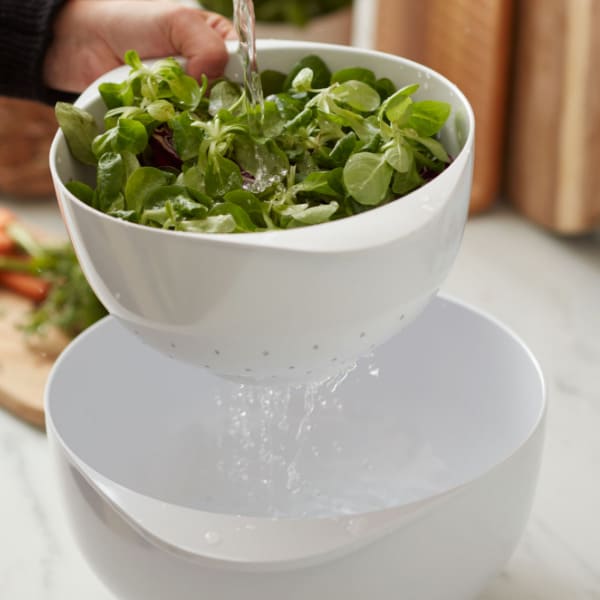
COLANDERS
The Rosti colander is perfect together with the Margrethe bowl of the same size. Choose a matching bowl or mix and match to create a dynamic colour combination. Available in a 1.5 and a 4 litre version. Dishwasher-proof, but cannot be used in microwaves and freezers. Keeps its shape, even when heated.
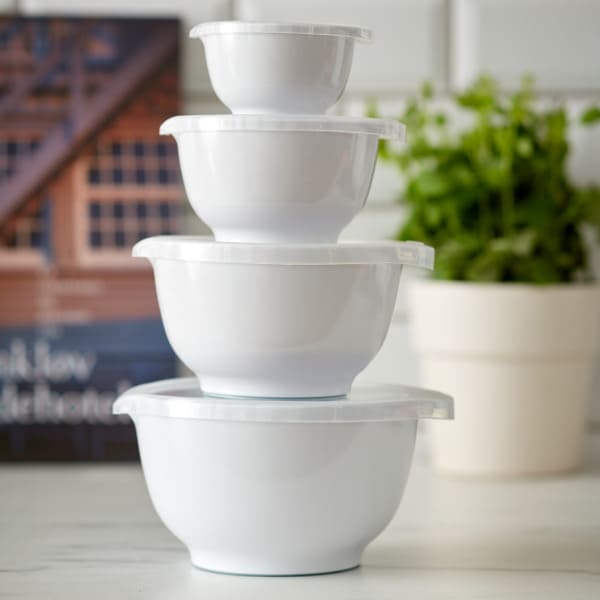
BOWL SET
We have put together a variety of different Margrethe bowl sets. With the sets you really do get it all – the most popular sizes, the loveliest colours in exclusive combinations, functionality and beauty combined.

Super bowl
The large Margrethe mixing bowl from Rosti holds 6 litres and is ideal for preparing large portions of all kinds of food, such as doughs, vegetables and meats. The bowl can of course also be used for serving.
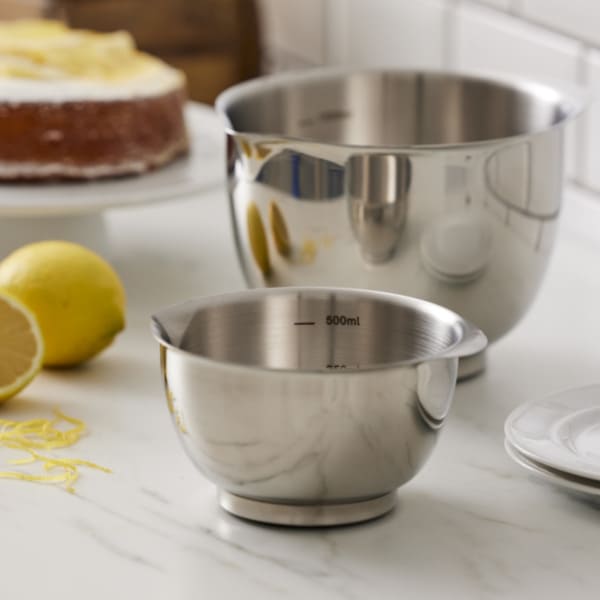
A shiny take on a classic
It has all the classic virtues of the Margrethe bowl: the excellent handle, the practical pouring spout and the non-slip base ring. But the exclusive steel bowl shines still more. The bowl features a satin finish on the interior and a glossy finish on the exterior. It is dishwasher and freezer-safe, but cannot be used in the microwave.
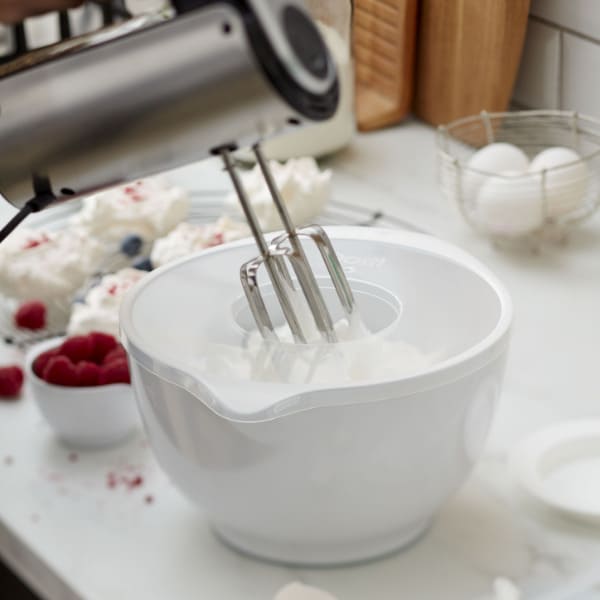
LIDS
The Rosti lid for the Margrethe bowl is available in different sizes, so there are lids for mix jugs and for all bowl sizes (except the large dough bowl and the steel bowls).
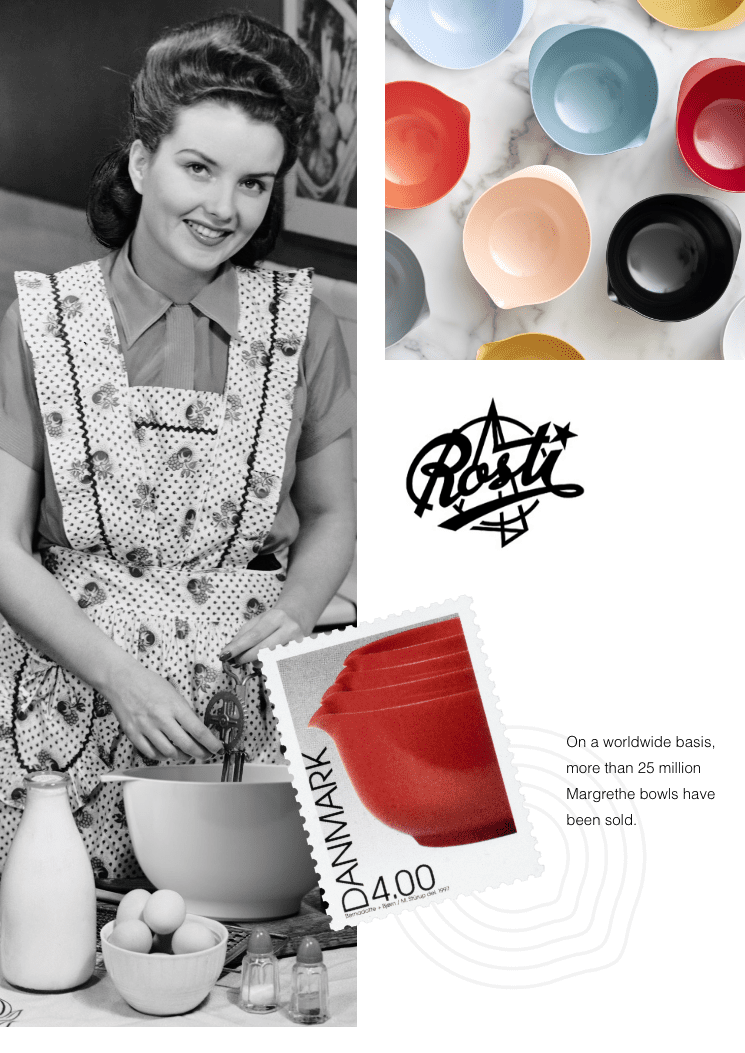
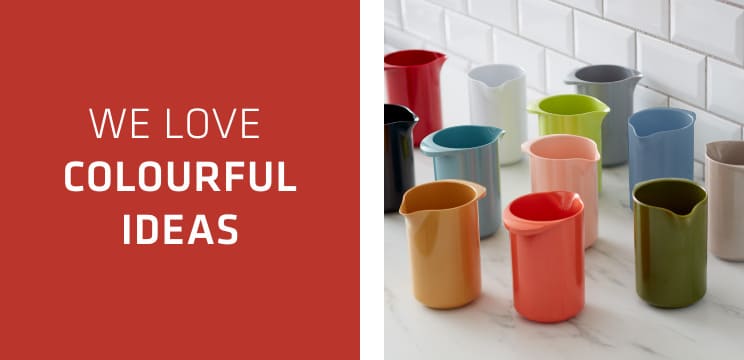
from back room
to international
company
Rolf Fahrenholtz and Stig Jørgensen wanted to add a set of mixing bowls to Rosti’s range of melamine products. In 1947 Rosti purchased mixing bowl samples in all imaginable sizes, shapes and materials and asked a large number of housewives about the bowls advantages and shortcomings. The results revealed that housewives wanted a curved bowl that was spacious and yet high enough to allow whipping and stirring without the contents spilling over the sides. The bowl should also have a pouring lip and a good handle for a perfect use.
The next step was to find a designer who could reconcile these requirements with a timeless and functional design. The choice fell on Acton Bjørn and Sigvard Bernadotte’s design studio in Copenhagen, which at the time was one of the few studios in Scandinavia working with industrial design. There wasn’t a great deal of money available for the fee, so not much time was to be spent on the brief, according to the studio’s internal instructions. Fortunately the designers got it right the first time round, and with four colour suggestions for a small extra payment, the task was completed. Rosti now had a bowl that united function, quality and design.
Named after a niece
In 1950 the bowl went into production. Some years later, Sigvard Bernadotte wanted to give it a special name. Bernadotte was the son of the Swedish King Gustav VI Adolf, the brother of the Danish Queen Ingrid and thus the uncle of Princess Margrethe. In 1953 the law governing the succession to the Danish throne was changed, and suddenly 13-year-old Margrethe’s name was on everyone’s lips. Bernadotte asked the Danish court for permission to use the princess’s name for the bowl. He received permission to do so, and the next year the bowl was given its name: the Margrethe bowl.
The bowl was subsequently introduced for Christmas 1954 in three sizes, 2, 2.5 and 3 litres in white and pastel colours yellow, blue and green. The collection was expanded throughout the 1960s to include many different sizes and colours and the bowls were fitted with rubber rings at the base. Lids were also manufactured for all bowl sizes.
The Margrethe bowl has become an award-winning Danish design icon that has been depicted on stamps and which also has a place in the permanent collection of the Museum of Modern Art in New York. On a worldwide basis, more than 25 million Margrethe bowls have been sold.
